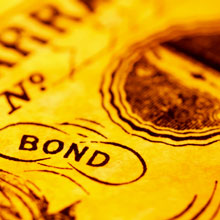Source: ForexYard
Disappointing German data sent the euro to fresh lows against the USD during European trading yesterday. In a sign that even the euro-zone’s biggest economy was not immune from the region’s debt crisis, the German Flash Manufacturing PMI and Ifo Business Climate both came in significantly below expectations. As a result, the EUR/USD dropped as low as 1.2515, close to a two-year low. As we close out the week, traders will want to continue monitoring any developments out of the euro-zone. Any new negative developments could send the common currency below $1.2500 before markets close for the week.
Economic News
USD – Safe-Haven USD Sees Additional Gains
The US dollar was able to extend its gains against the euro yesterday, following the release of several disappointing economic indicators out of Germany. That being said, a worse than expected US Core Durable Goods Orders figure left the dollar near its recent lows against the Japanese yen. The EUR/USD fell as low as 1.2515 during early morning trading. The pair eventually staged a slight recovery, reaching 1.2610 during the afternoon session. Against the JPY, the dollar dropped to 79.33 during mid-day trading before correcting itself. By the afternoon session, the pair reached as high as 79.47.
As we close out the week, traders will want to note the result of the US Revised UoM Consumer Sentiment figure, set to be released at 13:55 GMT. While the dollar has seen significant gains against currencies like the EUR and AUD in recent weeks, it has remained weak against its safe-haven rival the JPY. Should today’s news come in above the expected 77.7, the USD/JPY could turn bullish during the afternoon session.
EUR – EUR Drops Once Again Following Negative Data
Following the release of a worse than expected German Ifo Business Climate and Flash Manufacturing PMI yesterday, investors grew increasingly concerned that the euro-zone’s strongest economy may also be vulnerable to the region’s debt crisis. As a result, the euro dropped to an almost two-year low against the USD, reaching 1.2515 during the morning session. Against the Japanese yen, the euro fell some 80 pips, reaching as low as 99.34. The pair then managed to stage an upward correction, eventually stabilizing around the 99.90 level.
Turning to today, a lack of significant euro-zone news means that the common currency will not have many opportunities to stage a meaningful recovery ahead of markets closing for the week. That being said, the euro may be able to limit its losses if any announcements out of the euro-zone signal that progress is being made in talks about how to best stimulate growth in the region’s economic recovery. That being said, any additional negative news may lead to risk aversion which could send the euro lower.
AUD – Risk Aversion Causes AUD to Remain Bearish
The Australian dollar remained bearish against its safe-haven currency rivals yesterday, following negative European news. The AUD/USD fell as low as 0.9710 during the morning session before staging an upward correction and eventually reaching 0.9809. Against the Japanese yen, the aussie dropped as low as 77.07 before correcting itself. The pair stabilized around 77.60 during afternoon trading.
Turning to today, analysts are warning that without significant improvements in the euro-zone crisis, riskier currencies like the AUD are unlikely to stage a meaningful recovery. Traders will want to monitor any announcements out of the euro-zone for clues as to what Greece’s future is in the euro-zone. Any additional negative developments could weigh down on the AUD.
Crude Oil – Crude Oil Hovers Close to $90 a Barrel
Risk aversion in the marketplace sent the price of crude oil tumbling below the psychologically significant $90 a barrel level yesterday. Uncertainty about Greece’s future in the euro-zone combined with low demand for oil in the US has caused oil to fall in recent weeks. Eventually, the commodity was able to stage a slight recovery before stabilizing around the $90.70 level.
As we close out the week, oil traders will want to pay attention to any announcements out of the euro-zone which could result in further risk aversion in the marketplace. Should the euro extend yesterday’s bearish trend, crude oil may see additional losses as a result.
Technical News
EUR/USD
The Relative Strength Index on the daily chart indicates that this pair is in oversold territory, meaning an upward correction could occur in the near future. This theory is supported by the MACD/OsMA on the weekly chart, which has formed a bullish cross. Going long may be the wise choice.
GBP/USD
The weekly chart’s Williams Percent Range has dropped below the -80 level, indicating that an upward reversal could take place. Furthermore, the Slow Stochastic on the daily chart has formed a bullish cross. Traders may want to go long in their positions.
USD/JPY
Long term technical indicators for this pair are providing conflicting signals at this time. On the one hand, the weekly chart’s MACD/OsMA has formed a bearish cross. At the same time, the Williams Percent Range on the same chart is in oversold territory. Taking a wait and see approach may be the wise choice for this pair.
USD/CHF
The weekly chart’s MACD/OsMA has formed a bearish cross, indicating that this pair could see downward movement in the near future. This theory is supported by the Willaims Percent Range on the same chart, which has crossed above the -20 line. Opening short positions may be the wise choice for this pair.
The Wild Card
GBP/JPY
The daily chart’s Slow Stochastic has formed a bearish cross, meaning that this pair could see upward movement in the near future. Additionally, the Relative Strength Index on the same chart has crossed over into oversold territory. Forex traders may want to consider opening long positions ahead of a possible upward breach.
Forex Market Analysis provided by ForexYard.
© 2006 by FxYard Ltd
Disclaimer: Trading Foreign Exchange carries a high level of risk and may not be suitable for all investors. There is a possibility that you could sustain a loss of all of your investment and therefore you should not invest money that you cannot afford to lose. You should be aware of all the risks associated with Foreign Exchange trading.







